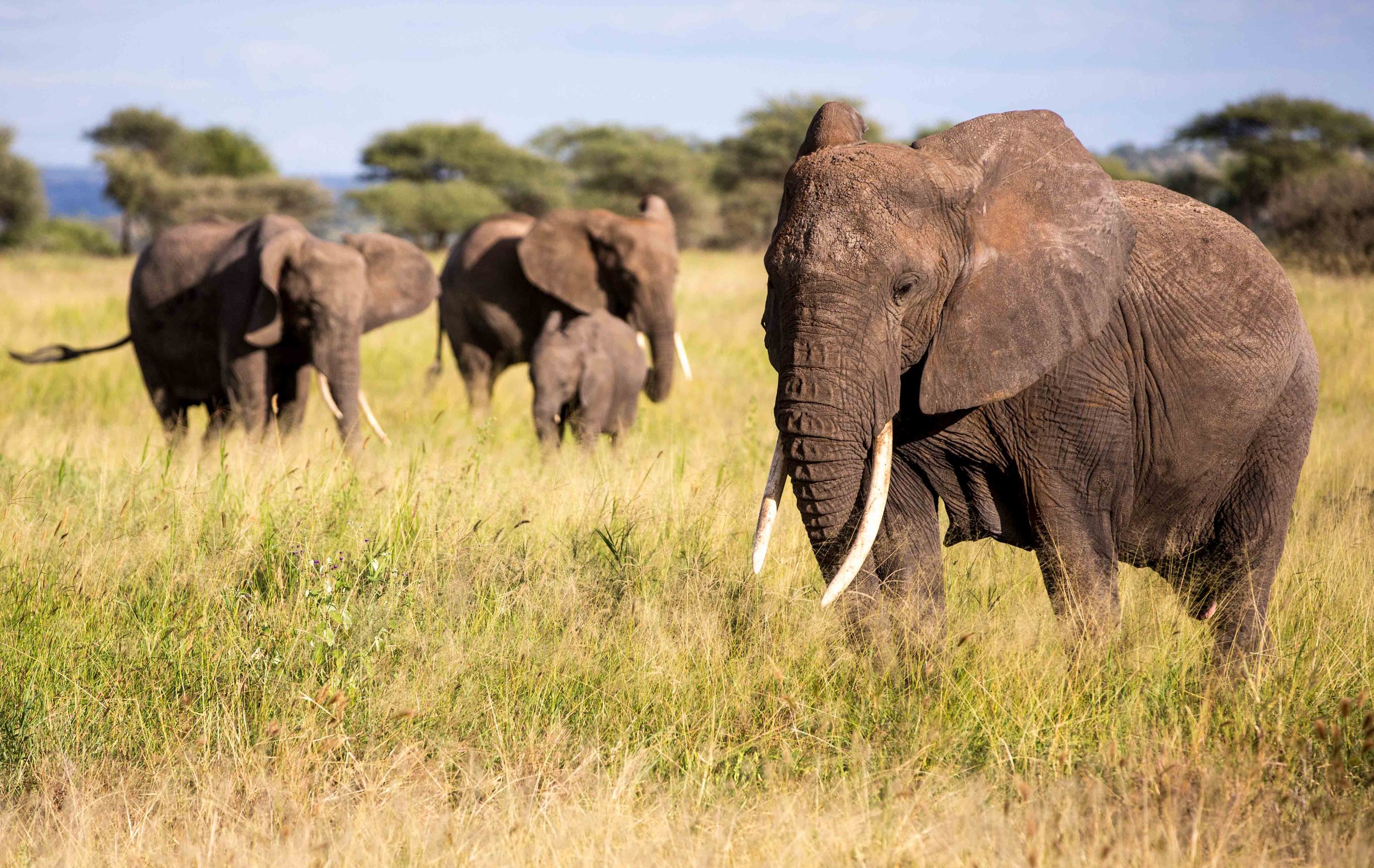What would the world look like without elephants?
One elephant is being killed, on average, every fifteen minutes in their home ranges across the African continent. The lucrative trade in ivory drives the continued poaching of elephants. In addition, a battle for limited natural resources is ensuing between people and elephants living in increasingly close proximity to each other. This growing conflict contributes to hundreds of elephant deaths each year.
During the recent poaching epidemic from 2009 to 2015, Tanzania became the epicentre of the crises, losing over sixty per cent of its elephant population. Data released by the Tanzanian Government revealed that the population had dropped significantly from 109,051 to 43,330, an unprecedented level for a country which has one of the largest elephant populations in Africa.
The smuggling of tusks from Tanzania’s borders was succeeding due to a perfect alignment of factors: weak enforcement and corruption, combined with highly organised criminal syndicates operating from China. The syndicates headed up by ‘ivory kingpins’ consist of traffickers, traders, and poaching gangs who actively recruit people from both Tanzania and Mozambique to hunt and slaughter elephants. A staggering 45 tonnes of ivory was recorded by Traffic as entering the black market from Tanzania between 2009 and 2014.
Ivory is seen as a symbol of wealth and power in Asia, and with a street value of $60,000 for two carved tusks, it is only the top two per cent in China who can afford to buy it. But that is is enough to drive the trade, alongside a surge in demand from the United States and Europe, who follow China closely as the second and third highest importers of ivory respectively.
Farmers who have lost their crops to elephants can be targeted by poaching gangs and pressured into joining their bloody mission, offering a month’s wage up front to help track and kill elephants. It is not only the demand in ivory products which needs to be halted, but also local conflict between elephants and farmers; this factor is the focus of Wild Survivors projects.
It is absolutely critical that pressure is placed on international governments to work together in combatting the trafficking of wildlife products – the fourth leading illegal trade globally, behind drugs, people smuggling, and counterfeiting. Poaching costs the lives of one hundred rangers every year who are on the frontline protecting wildlife.
We must work together, as organisations, support networks, and governments, to protect elephants from being poached or attacked for raiding farmland. Preserving natural habitat and wild spaces forms a vital part of this.
Elephants are a keystone species. But what does this mean?
Elephants support the lives of other animals and keep their environment functioning, playing a critical role in maintaining habitat. Without elephants, ecosystems would crumble. They are engineers of biodiversity. This is evident across the semi-arid savannas, woodlands, forests and shrublands that make up the landscapes of Africa - where elephant populations still exist.
During the dry seasons elephants will bore holes into the ground with their tusks, creating new water sources that all wildlife can benefit from, while flattening shrubland to create savannahs, ensuring predators can see their pray easily and hunt effectively. Elephant dung alone has a multitude of important purposes. Baboons will feed on the seeds that remain intact in dung, while dung beetles take care of the rest. Elephants act as giant seed dispersers, travelling vast distances and depositing tree seeds fertilised in their dung. There is nothing in the wild or made by us that is more effective at spreading seeds far and wide. Elephants are responsible for giant cathedrals of diverse trees in forested areas and the scattered Acacia across the savannas, which provide oxygen for the planet and are essential foraging sources and shelter for many species. Our planet cannot function with its keystone species, the elephant.
We are already aware of the threat to another keystone species, the honeybee. Due to the very real reality of us losing the insects that we need to pollinate one third of every mouthful we eat, scientists have developed bee robots to complete the job. Can you imagine tiny flying robots with mini brushes collecting and dusting pollen between flowers? Now try to picture how we might accomplish the same for elephants and the many important ecological services they deliver. Not quite as manageable!
Join Wild Survivors to make a lasting impact on conservation and the protection of elephants and wild spaces. Learn about our community & elephant coexistence projects and how to get involved.



